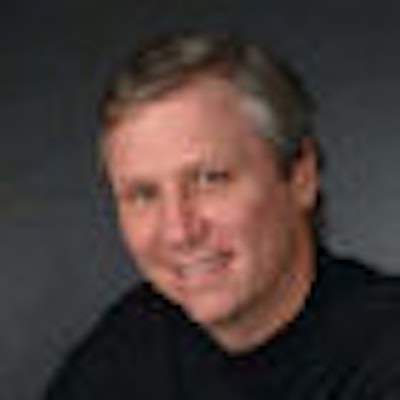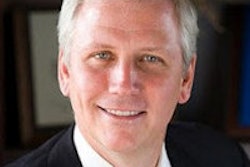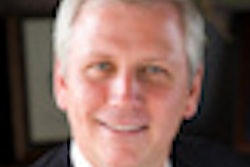
In dental school I was taught that I was the person who knew what was best for the patient. This same mind-set was propagated further in continuing education courses taken over a 25-year period (and still to this day).
So, being the over-the-top student that I was, with each patient I took a full-mouth series of films, diagnostic models (with, of course, a centric relation bite and mounted in a semiadjustable articulator), 18 photographs of the face and teeth, a digital bite registration, along with my oral cancer exam, my aesthetic exam, my tooth exam, my periodontal exam, my occlusal exam, and any other "exam" or records I thought I should do or take! Whew!
I then met with the patient to review my findings and treatment plan, which I had typed in a step-by-step appointment format, along with color glossy pictures and diagrams, a two-page consent form, and a large price tag for the treatment. After all, they needed it, right? If anyone was impressed, at least I was!
I then left the room to let one of the front-office staff members to make financial arrangements, which they were usually unsuccessful doing (due to no fault of their own), and I wondered why nearly all the patients never graced my door again. All I could think was, "Can't they see how thorough and meticulous I am?"
I was the antithesis of a collaborator. Yes, maybe years and years ago when insurance companies, time, money, aesthetic concerns of our clients, and many more things were not nearly as important as they are today, we dentists could get away with doing what I just described and, for the most part, providing all the dentistry a person needed to stay or get healthy. But those days are long past.
Start by listening
How can you help ensure that the people who choose you for their care receive the care they want and need?
There is definitely an art to collaboration -- and collaboration is what is needed today when working with our clients. Yes, I know, you see lots of dentists and consultants promising ways to show you how to have a multimillion dollar practice in today's economy. If money is what is driving you, then this article probably isn't for you.
When we collaborate, we start with one simple question: "How can I help you?" This powerful and simple question is a perfect starting point for finding out what's on your client's mind. My experience is that a client usually has a reason for making an appointment to see you; few come in for dental visits without any reason other than to "stay healthy."
So, you start by listening. It's that simple.
Just to clarify, collaborating is not getting someone else to go along with your ideas. Collaborating is working with the person to understand their goals and concerns; combine your knowledge and expertise; educate; encourage questions; respond appropriately, professionally, honestly, and without prejudice; and be open to all ideas, concerns, and options. Your "come from" is one of being open to helping your clients achieve their goals, all the while making sure you are informing and performing to the best of your ability and the standard of care of your community.
Now, on to more specifics.
Use active listening skills. Then repeat back what you heard the client say without doing it verbatim. Ask for clarification of anything you may have misunderstood, then repeat. Ask the next simple question, "What else?" Again, listen and repeat. Ask that same question until there are no more responses or the person tells you, "That's all."
Great! Now you know what's on their mind, what's important to them, and what they want. They will feel understood, which is infinitely more important than them understanding you! Additionally, they're ready to hear what you have to say. And what you have to say is important -- perhaps very important -- to their particular situation.
Another critical element of collaboration is asking permission -- that is, asking them if they are ready to proceed. Why? First of, you are allowing them to proceed at a pace they are comfortable with. This is extremely important because if a person feels pushed, you've just been demoted to the symbolic used car salesman category. Be patient and wait until they're ready. Their choice to move forward is their choice and is not only symbolic -- it's a tangible sign of their willingness to work with you.
Everyone on the same page?
Because the vast majority of our clients have a poor understanding of dentistry, it is often hard to collaborate with them. The challenge is to slow down, quit using "doctor-ese" talk, and get to a level they can understand. Just like reading a document of any sort, typically the first word a person comes to that they don't understand loses them. The words that follow as they read flow by as if they weren't even there because the person is still ruminating over what that word meant.
The same thing goes for your educational processes of dental health. So, "check in" with the person often, asking a simple question such as, "Does this make sense?" or "How does this sound to you?" or "Am I making sense?" or even "Am I confusing you in any way?" Address these questions before moving on, then ask the same "check-in" question to make sure they're on the same page as you. Everyone on the same page? Good.
You will want to apply this basic protocol to each element of a client's experience in your office, whether it's clinical or nonclinical. Clinically, it applies to everything: listening, questions, concerns, needs, issues, problems, and wants. It also applies to reviewing records, exam findings, photos, and more. Nonclinically, it can include understanding their insurance benefits, your office's payment and scheduling options, and more.
Become a master of collaboration and watch your enjoyment of dentistry and your success grow. Further, teach these skills to your team. You'll be doing a great service to your clients, your community who entrusts their care to you, and your profession. If you need help, just ask.
Dr. Deems is a professional personal and business coach to dentists and their teams and is a practicing dentist. Since 2005, he has been named to Dentistry Today's Top Leaders in Continuing Education and is the author of several books, the most recent titled The Dentist's Coach: Build a Vibrant Practice and the Life You Want. He can be reached at [email protected] or at 501-413-1101.



















